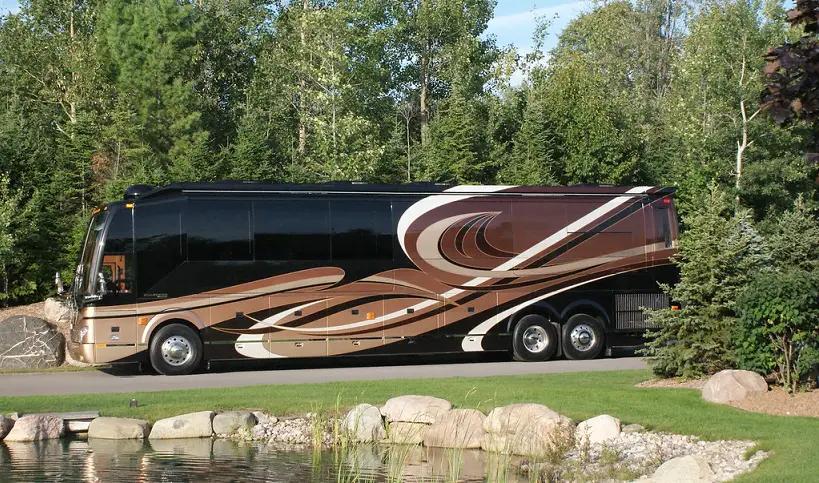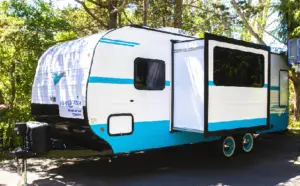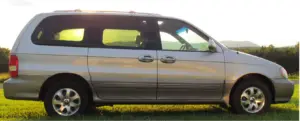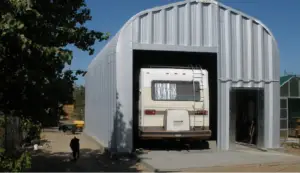Motorhomes can tow up to 15,000 pounds with Class A and C towing the most weight. Class B motorhomes tow only up to 5000 pounds. Modern ones can tow up to 20, 000 pounds while including the gross combination weight.
The towing ability for a motorhome is also affected by aerodynamics – the more aerodynamic models tow better and have better mileage when towing.
However, the ability to tow also depends on the motorhome engine size. The smallest engines cannot be used to tow anything when fully loaded.
For towing reasons, motorhomes can be used to tow cars, boats, and trailers behind them.
How much weight can a class A motorhome tow on average?
A motorhome towing capacity is calculated by subtracting the gross combination weight from the gross combination weight rating.
The former is calculated by adding the curb weight, cargo weight, water weight, passenger weight, tongue weight, and LP weight. There are simple calculators online that tell you the limit your RV can tow by simply inputting the make, model, and year it was made.
Class A Motorhomes have high towing capacity and they can easily tow a sedan, minivan, SUV or a pickup truck behind them.
On an average Class A motorhomes can tow up to 15,000 lbs, some high end motorhomes are rated to tow as high as 20,000 lbs and even higher than this. This class of motorhomes usually has the highest towing limit as compared to other motorhome types.
Below is a table showing the popular Class A motorhomes and their towing limits.
| Class A Motorhome | Towing Weight Limit |
|---|---|
| American Coach Eagle 45K | 15,000 lbs |
| Winnebago Horizon | 15,000 lbs |
| Forest River Berkshire XLT | 15,000 lbs |
| 2016 Tiffin Phaeton 44 OH | 10,000 lbs |
| 2021 Newmar King Aire 4553 Luxury Diesel Motorhome | 15,000 lbs |
| 2021 Thor Motor Coach Tuscany 45MX | 15,000 lbs |
| 2021 Foretravel Presidential Realm LVB | 8,000 lbs |
| Newell Coach p50 | 20,000 lbs |
Class C and Class B Average Towing Weight
These motorhomes can tow about 10,000 pounds on average or between 3,500-lbs to as much as 15,000 pounds depending on the amenities onboard, the chassis, and the engine.
In other words, all class C motorhomes should be capable of towing a 3,500-lb car without any problem at all. The hauling capacity of your class c motorhome should be above 4,000 or 5,000-lbs for it to haul a pickup truck.
Know the weight ratings
Towing behind another vehicle is not an easy job no matter how light the towed vehicle is. Understanding your towing vehicle, its weight ratings is critical and so is with the towed vehicle as well.
For RV, you need to know various weight related rating like below.
UVW (Unloaded Vehicle Weight) : This is the weight of the RV without any cargo, passengers or liquids. It is also known as dry weight of the RV.
GVWR (Gross Vehicle Weight Rating) : This is the weight of the RV when it is fully loaded with passengers, liquid and cargo. This is the rating that should not be exceeded. It is listed by the RV manufacturer.
GCWR (Gross Combined Weight Rating) : This is the combined weight of the RV and the towed vehicle with all the passengers, liquids and cargo. This is the combined weight of both tow vehicle and towed vehicle together.
Tongue Weight : This is the weight exerted by the towed vehicle on the towing hitch. It will vary based on how the weight is distributed.
Different Method of towing car behind RV
Hauling a car behind a motorhome is common among those traveling with an RV because they sometimes need to use the car after packing the RV.
They can, for instance, use the car to explore parks, go buy some food, or pick friends. There are three options for towing a car behind an RV.
While most RVs come from the factory with an attached hitch, they can sometimes be added to the trailer.
The trailers will have two main types of hitches namely a receiver and a ball hitch. These hitches can pull different weight amounts as per their rating. Hence, you must refer to the trailer weight and towing capacity when towing with a hitch.
1. Four down method
Also called flat towing or dinghy towing, the method is done with a small tow bar. It is used to refer to the number of to-be-pulled car tires on the road. In this case, the car is pulled with four wheels touching the ground.
Although it is beneficial when working with small tow bars, many transmissions will not allow the use of this method. Otherwise, you might have to account for transmission repairs because the method will damage transmission if it is not designed for four-down towing.
Additionally, you need to spend around $1,500 to $2,500 for these items purchasing the wiring kit, safety cables, supplemental braking system, tow bar, and base plate kit to install on the toad.
This can be expensive for many people. Otherwise, you could just hire a towing service to help. The wiring kit is used to connect to the ramps to signal while on road. Some bars can be folded when not in use.
Others have adjustable safety chains for legal compliance. Otherwise, they have a towing capacity that needs to be checked to handle the towed vehicle weight.
This method does not require spending a lot of time to unhook the toad whenever you need to back up the RV, otherwise, you cannot back up the RV when the towed vehicle is connected.
2. The Tow Dolly
This type of trailer has two front wheels of the towed car loaded. The other rear wheels roll on the road as the car is towed with the motorhome. This method is best for vehicles with front-wheel drive transmissions. However, you can disconnect the transmission and then place the rear-wheel-drive cars in the tow dolly.
This method requires lesser equipment than the four-down method. You only need the ratchet straps and safety chains to use this method.
It is a beneficial method if the RV is unable to pull the toad and car hauler weight loaded on it. Unfortunately, you will need a license to use the dolly in some states. This can be expensive. Secondly, it is impossible to back up the motorhome when the dolly and toad are attached.
For this towing method, you will need ratchet straps and safety chains. The ratchet straps should be of the desired length to tie down the vehicle. These are used to secure the car in position.
The safety chains will be used to secure and prevent the car from dangerous movement and accidents as it is being towed. Make sure to check the pound rating of the chains. In many states, these are required in law when towing cars.
3. Car hauler or trailer method
The trailer is a requirement when towing an all-wheel-drive or 4 wheel drive vehicle. These trailers have two axles to ensure stability and low rails along the edges.
The best car haulers are those rated at 3,500 lbs per axle. Car haulers also need separate licensing, adding a $300 expense to your car hauling exercise.
Additionally, you may need to consider a “pull-through” campsite if storing the trailer after detachment is an issue after reaching the destination.
However, one advantage of this method is that you can back up the motorhome even with the trailer or hauler attached.
For this method, you will need ramps, ratchet straps, and a brake controller for those trailers with electric brakes. Some trailers do have ramps. They can fit tires up to 12″ wide. The long ramps are the best for loading your car onto a trailer.
The ratchet straps are used to prevent the car from moving too much when being hauled. A brake controller is used to control the brakes and some can be operated via smartphone apps.
Rules for towing a car behind a motorhome: is it legal in the us to tow behind RV?
Regardless of the state in which you want to tow your vehicle, installing a base plate on the toad is a must.
The base plate is used to connect to the toad. Further, you will need safety cables, a breakaway system, and a supplemental braking system.
A light kit is used to display signs on the road when stopping and turning. Mechanical brakes do not need any electricity to operate. They therefore will not wear down the vehicle battery when towing the car.
It is legal to tow behind an RV in the United States. However, some states do not permit triple towing including an RV.
These include Texas, New York, New Jersey, Washington, Virginia, Oregon, Nevada, and about 10 others. Otherwise, about half of the states will allow triple towing. These states have rules regarding the towing speed and maximum towing length.
Idaho, for instance, allows triple towing 75 feet but the speed limit is 65 mph. In fact, this is the common requirement for states that do allow triple towing. Indiana allows 60 feet maximum towing limit.
In some states, the limit for all 3 units is 65 feet. So you would have to check the requirements for the state in which you intend to do the towing. Still, in some states, you can only add a second trailer behind a 5th wheel trailer.
Some other states limit a second trailer to recreational equipment like boats and snowmobiles.
Still, some states like California and Michigan require special endorsement on the driver’s license if you should tow any trailer of over 10,000 pounds. The same is required to drive a motorhome of over 40 feet long.
Can you tow another RV or travel trailer behind class a motorhome?
Most motorhomes can pull a travel trailer behind them. However, you would most likely need to have a Class B or above to pull anything heavy-duty behind a motorhome.
Class A motorhomes are capable of towing RVs and travel trailers depending on the weight of the to-be-towed RV and trailer. However, be sure to check the length restrictions for your area when towing with motorhomes.
What other things can be towed behind class A?
Class A motorhomes are capable of towing other things like campers, boats, horse trailers, and indeed other utility and cargo behind them.
This is as long as the towed does not exceed the required weight limit or pose any dangers when being towed. It is easy to tow small boats like kayaks, canoes, and sunfish sailboats with a motorhome without any problem.
However, it can be troublesome to tow long and heavy boats because of the length restrictions. Heavy trailer-able houseboats need to be pulled with class C motorhomes. Popup trailers and small lightweight trailers are easy to pull behind a motorhome of any type.
Which cars can be best towed behind class a motorhomes? Which ones can be flat towed?
Some of the best vehicles to tow behind an RV include Jeep Wrangler, Chevy Sonic, Ford Focus, and Ford Fiesta. For a car to be towed behind a motorhome, it will need to have a transmission disconnect, steering lockout override, and other features needed for flat towing.
The 4×4 is the best for flat towing with a motorhome given its off-road readiness. It is also most suitable for traveling through rugged parts of the country. Ford F-150 is regarded as the most popular pickup truck for flat towing.
This is because it provides spacious room for trips. The Jeep Grand Cherokee also provides a spacious and comfortable interior and hence one of the preferable for short trips.
Precautions/tips to take while towing behind a motorhome
When towing a car with a motorhome, it is necessary to have a higher tire pressure as per the manual. You should also ensure to tighten the wheel lug nuts on the trailer to the required torque.
- It is also advisable to always carry a spare tire when towing with a motorhome. Ensure the wheel of the trailer has a specified lug nut wrench.
- The maintenance should also be up to date – the oiling and filter change should have been done recently and the brake pads should have plenty of life remaining.
- Ensure that the engine coolant is to the properly required level and the transmission fluid is topped off.
- It is also necessary to check that the trailer’s brakes are adjusted and the wheel bearings are greased. There needs to be a match between the ball on the tow hitch and the trailer coupler.
- Ensuring you follow the regulations relating to using trailer safety chains, trailer lights, and limit towing length, is also critical. Make sure to check the regulations in the place where you live.
- The trailer safety chains are not to be run straight. Instead, they should be crossed as they are connected to the hitch. In case the trailer is disconnected, they should permit sharp turns and not drag on the road.
- You should also ensure to connect the trailer’s electrical wiring system to the tow vehicle. Ensure the wires are loose enough to allow the vehicle to make the turns without disconnection from the vehicle.
Besides, consider getting two mirrors to help see the trailer’s blind spots as you drive or back up the motorhome. It is also considerate to get a larger fuel tank for a lot of towing exercises and use wheel chocks to be placed in front of and behind the tires when unhooking the trailer from the tow vehicle.





